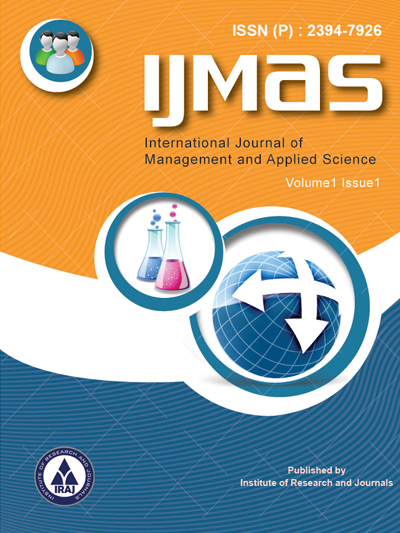Publish In |
International Journal of Management and Applied Science (IJMAS)-IJMAS |
 Journal Home Volume Issue |
||||||||
Issue |
Volume-4,Issue-2 ( Feb, 2018 ) | |||||||||
Paper Title |
Obesity Assessment Using Three Dimensional (3D) Body Scanning Technology | |||||||||
Author Name |
Suhana Japar, Shaliza Mohd Shariff, Asma Ahmad Shariff | |||||||||
Affilition |
Institute of Graduate Studies, University of Malaya Fashion Department, Universiti Teknologi Mara Mathematic Division, Centre for Foundation Studies in Science, University of Malaya | |||||||||
Pages |
34-37 | |||||||||
Abstract |
Abstract- Obesity is one of the risk factor that could lead to the development of non communicable disease such as diabetes mellitus, cardiovascular disease and cancer. Body mass index (BMI) is a universal indicator that has been widely used by researcher and healthcare practitioner to categorize obesity. However, BMI cannot differentiate between fat and muscle that could penalized muscular individuals into obese category. In contrast, 3D scanning technology which is able to generate precise measurement of body shape and size is valuable in term of identification of abnormal fat distribution which become the factor that affect health condition. The aim for this study is to identify the correlation of obesity index and body fat percentage. The obesity index include in this study are body mass index, waist circumference, waist to hip ratio and abdominal volume index that were taken manually and automatically. A total of 300 Malaysian women aged 18-54 years old in University of Malaya, Kuala Lumpur participated in this study. Data on body fat percentage and weight were measured using Full Body Sensor Body Composition Monitor and Scale (Omron HBF 514). Waist and hip circumference were taken using manual measurement. Participants also have undergone 3D body scanning procedures to obtain body circumferences, body volume and 3D image. The mean age of the study population was 27.4 years, with a mean BMI of 24.89 kg m-2. All the obesity indices correlated significantly with body fat while waist to hip ratio consistently has the lowest correlation coefficients. In summary, BMI have some limitations to differentiate between fat and muscle. We suggest that by incorporating 3D body scanning technology, it will provide better assessment tool for early detection of individual health particularly having risk of heart disease, strokes, and diabetes. Keywords- 3D body scanning, obesity, manual measurement, automated measurement, body fat. | |||||||||
| View Paper | ||||||||||